introduction现代语言学.ppt
- 格式:ppt
- 大小:42.51 KB
- 文档页数:18
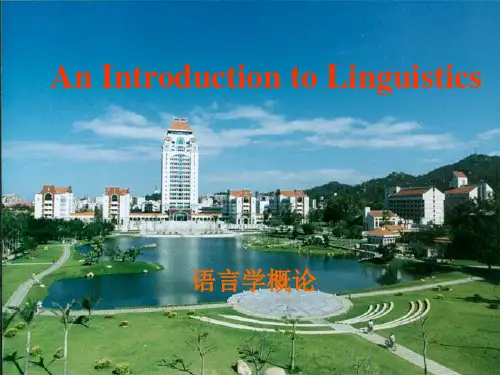
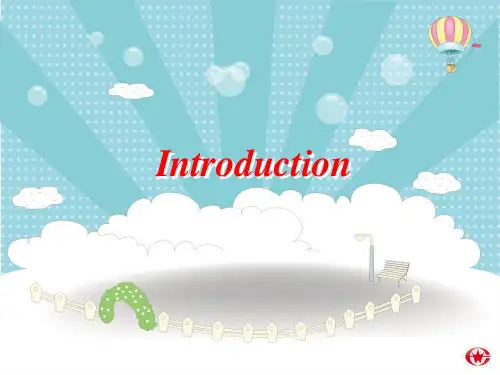
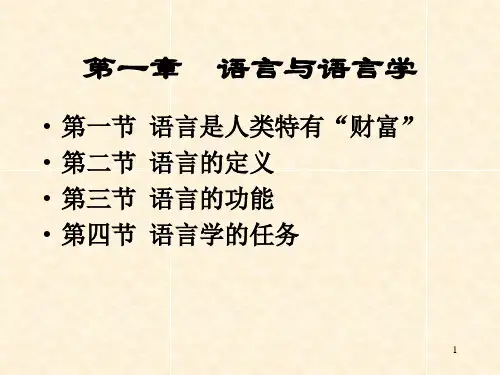
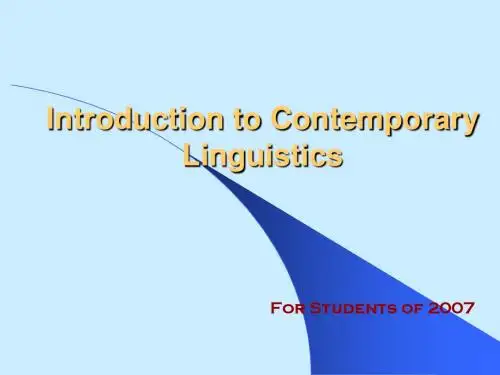
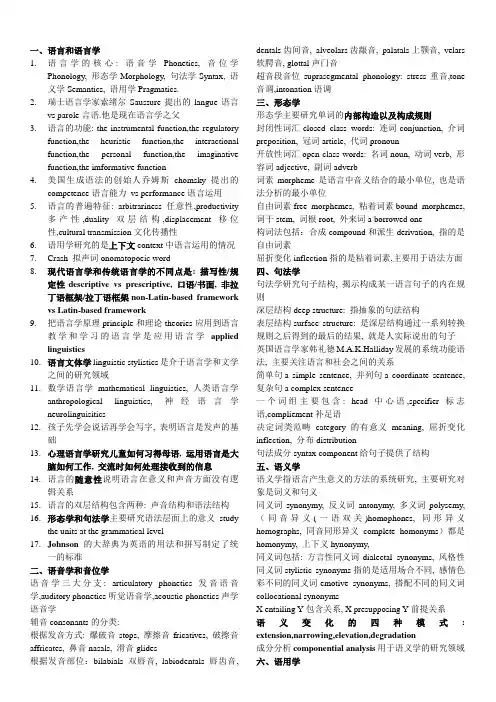
一、语言和语言学1.语言学的核心: 语音学Phonetics, 音位学Phonology, 形态学Morphology, 句法学Syntax, 语义学Semantics, 语用学Pragmatics.2.瑞士语言学家索绪尔Saussure提出的langue语言vs parole言语.他是现在语言学之父3.语言的功能: the instrumental function,the regulatoryfunction,the heuristic function,the interactional function,the personal function,the imaginative function,the imformative function4.美国生成语法的创始人乔姆斯chomsky提出的competence语言能力vs performance语言运用5.语言的普遍特征: arbitrariness任意性,productivity多产性,duality双层结构,displacement移位性,cultural transmission文化传播性6.语用学研究的是上下文context中语言运用的情况7.Crash 拟声词onomatopoeic word8.现代语言学和传统语言学的不同点是: 描写性/规定性descriptive vs prescriptive, 口语/书面, 非拉丁语框架/拉丁语框架non-Latin-based framework vs Latin-based framework9.把语言学原理principle和理论theories应用到语言教学和学习的语言学是应用语言学applied linguistics10.语言文体学linguistic stylistics是介于语言学和文学之间的研究领域11.数学语言学mathematical linguistics, 人类语言学anthropological linguistics, 神经语言学neurolinguisitics12.孩子先学会说话再学会写字, 表明语言是发声的基础13.心理语言学研究儿童如何习得母语, 运用语言是大脑如何工作, 交流时如何处理接收到的信息14.语言的随意性说明语言在意义和声音方面没有逻辑关系15.语言的双层结构包含两种: 声音结构和语法结构16.形态学和句法学主要研究语法层面上的意义studythe units at the grammatical level17.Johnson 的大辞典为英语的用法和拼写制定了统一的标准二、语音学和音位学语音学三大分支: articulatory phonetics发音语音学,auditory phonetics听觉语音学,acoustic phonetics声学语音学辅音consonants的分类:根据发音方式: 爆破音stops, 摩擦音fricatives, 破擦音affricates, 鼻音nasals, 滑音glides根据发音部位:bilabials双唇音, labiodentals唇齿音, dentals齿间音, alveolars齿龈音, palatals上颚音, velars 软腭音, glottal声门音超音段音位suprasegmental phonology: stress重音,tone 音调,intonation语调三、形态学形态学主要研究单词的内部构造以及构成规则封闭性词汇closed class words: 连词conjunction, 介词preposition, 冠词article, 代词pronoun开放性词汇open class words: 名词noun, 动词verb, 形容词adjective, 副词adverb词素morpheme是语言中音义结合的最小单位, 也是语法分析的最小单位自由词素free morphemes, 粘着词素bound morphemes, 词干stem, 词根root, 外来词a borrowed one构词法包括:合成compound和派生derivation, 指的是自由词素屈折变化inflection指的是粘着词素,主要用于语法方面四、句法学句法学研究句子结构, 揭示构成某一语言句子的内在规则深层结构deep structure: 指抽象的句法结构表层结构surface structure: 是深层结构通过一系列转换规则之后得到的最后的结果, 就是人实际说出的句子英国语言学家韩礼德M.A.K.Halliday发展的系统功能语法, 主要关注语言和社会之间的关系简单句a simple sentence, 并列句a coordinate sentence, 复杂句a complex sentence一个词组主要包含: head中心语,specifier标志语,compliement补足语决定词类范畴category的有意义meaning, 屈折变化inflection, 分布distribution句法成分syntax component给句子提供了结构五、语义学语义学指语言产生意义的方法的系统研究, 主要研究对象是词义和句义同义词synonymy, 反义词antonymy, 多义词polysemy, (同音异义(一语双关)homophones, 同形异义homographs, 同音同形异义complete homonyms)都是homonymy, 上下义hynonymy,同义词包括: 方言性同义词dialectal synonyms, 风格性同义词stylistic synonyms指的是适用场合不同, 感情色彩不同的同义词emotive synonyms, 搭配不同的同义词collocational synonymsX entailing Y包含关系, X presupposing Y前提关系语义变化的四种模式: extension,narrowing,elevation,degradation成分分析componential analysis用于语义学的研究领域六、语用学英国哲学家John.Austin发明了言语行为理论speech act theory区分语义学和语用学的最本质因素是是否考虑了语言使用过程中的语境言语行为的三种次行为: 言内行为locutionary, 言外行为illocutionary, 言后行为perlocutionary act美国哲学语言学家john searle约翰舍尔把言外行为分为五大类: representative描述性功能, directive指示性功能(包括invitng,suggesting,requesting,advising,warning,threatening ,ordering), commissive承担性功能, expressive表达性功能, declarative宣告性功能美国哲学家格莱斯Grice认为言语交际要包含以下四条准则:数量准则quantity maxim, 质量准则quality maxim, 关联准则relation maxim, 方式准则manner maxim情境因素contextual features包括时间, 地点和参与人, 不包括目的。
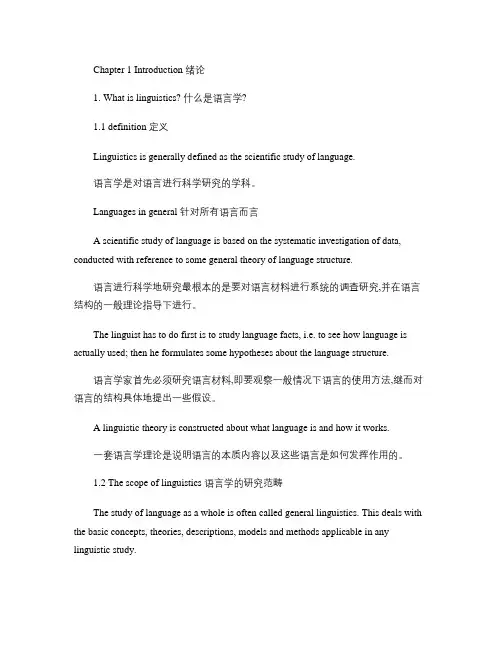
Chapter 1 Introduction 绪论1. What is linguistics? 什么是语言学?1.1 definition 定义Linguistics is generally defined as the scientific study of language.语言学是对语言进行科学研究的学科。
Languages in general 针对所有语言而言A scientific study of language is based on the systematic investigation of data, conducted with reference to some general theory of language structure.语言进行科学地研究最根本的是要对语言材料进行系统的调查研究,并在语言结构的一般理论指导下进行。
The linguist has to do first is to study language facts, i.e. to see how language is actually used; then he formulates some hypotheses about the language structure.语言学家首先必须研究语言材料,即要观察一般情况下语言的使用方法,继而对语言的结构具体地提出一些假设。
A linguistic theory is constructed about what language is and how it works.一套语言学理论是说明语言的本质内容以及这些语言是如何发挥作用的。
1.2 The scope of linguistics 语言学的研究范畴The study of language as a whole is often called general linguistics. This deals with the basic concepts, theories, descriptions, models and methods applicable in any linguistic study.把语言学作为一个整体而进行的全面的语言学研究一般称为普通语言学。

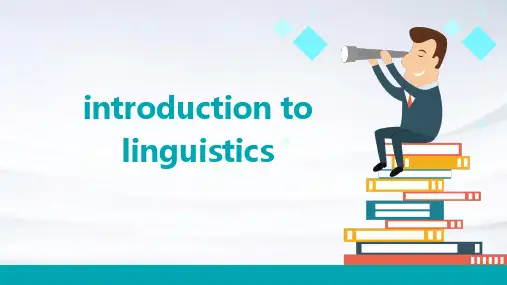

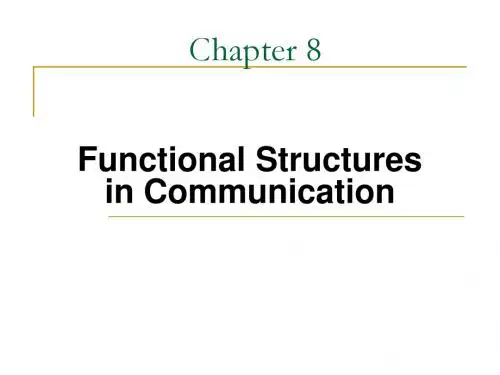
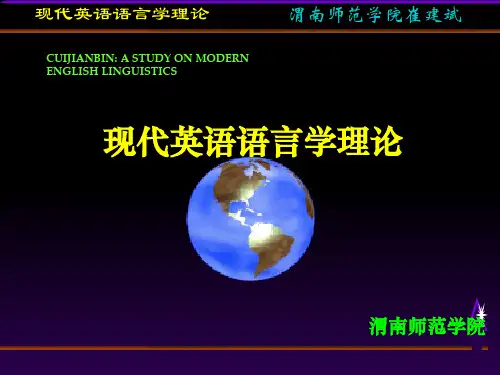
现代语言学笔记Chapter 1 introduction1,Linguistic is the scientific study of language.2,Data and theory stand in the dialectical complementation.3,The process of linguistic studyStudying the linguistic facts →putting forward hypothesis→testingthem→propose the linguistic theory. 4,the scope of linguisticsPhonetics: the study of sounds oflanguagePhonology: the study of how thesounds are formed and conveyedmeanings in linguisticcommunication.Morphology: the study of thelinguistic symbols even the smallestcomponents called morphemes.Syntax: the study of how the wordsare formed to permissible sentences.Semantics: the ultimate purpose is to convey meaning, so the study of meaning is called semantics. Pragmatics: the language occurs at a certain time and place, also in the context of language, it is called pragmatics.Sociolinguistics: language is a social activity; society and language are closely connected, so the study of the relation of them is called sociolinguistics.Applied linguistics: the language also can be applied to the solution of practical problems. Psycholinguistics: the language is affected by the ideas and thoughts of people and it studies how we as infants acquire our mother tongue.*the emergence of a new teaching approach or method often follows the emergence of a new linguistic theory.Prescriptive: the rules that tell peoplewhat they should say and whatshould not sayDescriptive: analyze and describelanguage people actual use.Synchronic: the study of language atsome point of time.Diachronic: the study of historicallanguage development throughchanges of time.Speech and writingPeople now are giving priority tospeech. Why?①speech precedes writing②some nations only have the spokenform③speech could can be used for thewider range of purpose④speech could stand a larger loadin 。